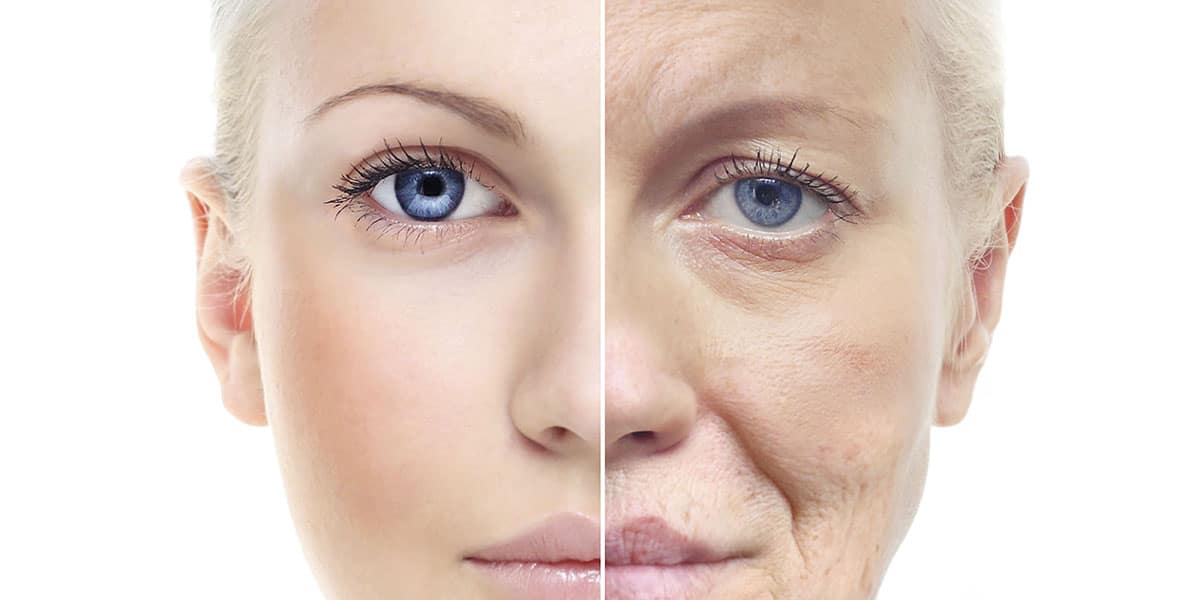Whether we like it or not, everyone will show some signs of aging as they get older. Aging that we can’t control is referred to as intrinsic or chronological aging. While we can’t control this type of aging, we can control our exposure to environmental factors that exacerbate signs of aging, like chronic exposure to high and low temperatures, smoking, and alcohol consumption. One of the main environmental factors that ages our skin is ultraviolet (UV) radiation from the sun. In fact, it’s estimated that 90% of skin aging is due to the effects of the sun!¹ The sun causes proteins in our skin to deteriorate, leading to the loss of our youthful appearance over time. On the bright side, this type of aging can be prevented with proper sun protection.
Elastin and collagen are two proteins that help keep our skin looking youthful. Elastin, as the name suggests, helps keep the skin elastic. In other words, it’s what gives our skin bounce and resiliency.² Collagen, on the other hand, helps our skin to maintain its rigidity. We have more collagen than any other protein in our body,³ so you can imagine why it’s so important. We can also thank stem cells for keeping our skin looking young.⁴ These special cells give rise to other cells that replace dead cells. If stem cells don’t function properly, skin will deteriorate over time.UV radiation causes skin to age in several ways. It causes stem cells to die off, leading to thinning and wrinkling of the skin. UV radiation also activates enzymes called matrix metalloproteinases, or MMPs for short. These MMPs break down collagen. UV radiation also activates an enzyme called cathepsin K. Cathepsin K breaks down elastin.⁴
The secret to avoiding aging caused by sun exposure is sun protection. Always wear a broad-spectrum sunscreen with an SPF of 30 or higher. Also remember to wear sunglasses and a wide-brimmed hat, and seek shade whenever possible. Sun Index is a free app available for iOS and Android that gives you personalized sun safety tips including how much sunscreen to apply and how long you can stay outside before getting a sunburn.Sources:
- Canadian Dermatology Association. (n.d.). Photoaging. Retrieved July 28, 2017
- Sigma-Aldrich. (n.d.). Elastin. Retrieved July 28, 2017
- Sigma-Aldrich. (n.d.). Collagen. Retrieved July 28, 2017
- Gilchrest, B. A. (2013). Photoaging, J Invest Dermatol 133: E2–E6. Retrieved July 28, 2017



